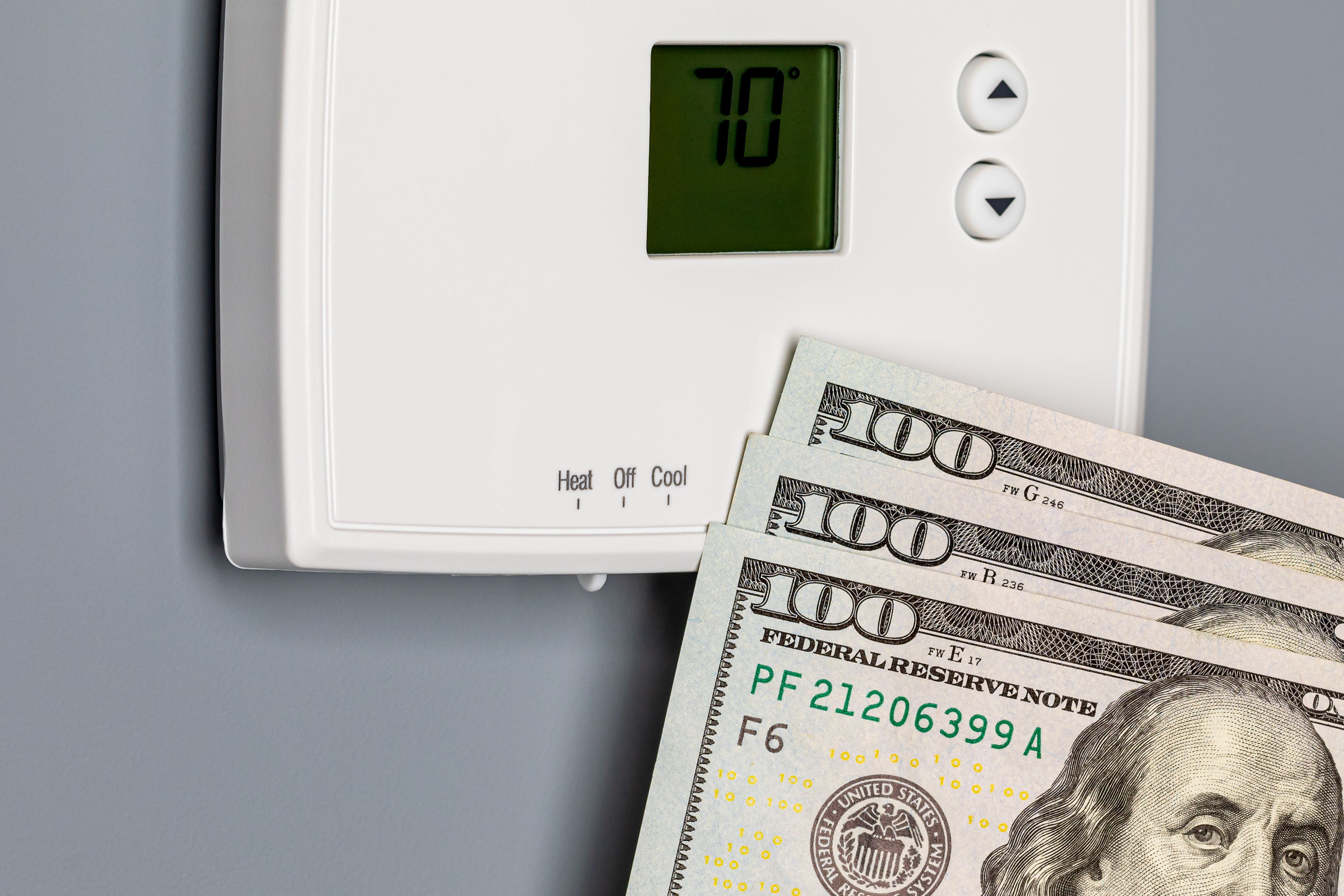The Best Temperatures to Set Your Thermostat
These are the best temperatures to set your thermostat in the summer and winter to save the most on energy bills.


Heating and cooling your home is expensive, but if you set your thermostat to the right temperature, you could save up to 10% a year in energy costs...which keep rising. From April 2021 to April 2024, electricity costs rose 24%. And unfortunately, don’t expect to see much relief in these costs anytime soon. Instead, plan on rates going up over the next few years.
But while you can’t control the cost of energy, there are several things you can control to lower your overall energy bill in both the summer and winter months. These range from simple fixes like relying more heavily on fans, or extensive upgrades, like installing a heat pump.
One of the easiest ways to save is by properly setting your thermostat. Here’s what temperatures are ideal for saving on energy costs during the summer and winter. And if you have a smart thermostat, it’ll be even easier to follow these guidelines.

Sign up for Kiplinger’s Free E-Newsletters
Profit and prosper with the best of expert advice on investing, taxes, retirement, personal finance and more - straight to your e-mail.
Profit and prosper with the best of expert advice - straight to your e-mail.
Best temperatures to set your thermostat in summer
According to the Department of Energy, the less difference between indoor and outdoor temperatures, the lower your overall cooling bill will be. The department has recommended leaving your thermostat at 78°F when you’re at home, and in the 80°F range when you’re away or sleeping.
The following Energy Star table shows recommendations on starting points for setting energy-saving temperature settings.

Sure, you could save a good bit of change by keeping your home this warm during the summer, but for many, it’s way too hot. That’s why this number is more of a suggestion than a hard rule. Energy Star advises consumers to just use these temperatures as starting points but acknowledges the need to adjust the settings to fit your lifestyle.
So, if 78°F or higher is out of the question, the DOE recommends “setting the thermostat to a setting as high as is comfortable for you when you are at home and need cooling and to ensure humidity control if needed.”
In fact, hotter temperatures can decrease the quality of sleep. Many experts agree that 65°F is the best temperature for sleep. This temperature will surely run up your power bill, so it’s key to find the right balance between saving money and remaining comfortable.
One way to do so is by staying cool without air conditioning — which can be done by using ceiling fans properly, installing an exterior window shade or awning and keeping sunlight out with window coverings, for example.
Best temperatures to set your thermostat in winter
According to the Department of Energy, the lower the interior temperature, the slower the heat loss. So in the winter months, set your thermostat from 68°F to 70°F while you’re awake and lower when you’re away or asleep to save as much as possible. You can always bundle up at night or use a space heater for a few hours to heat a specific area of your home if you get too cold.
Installing a heat pump may also be a wise move if you're looking to save in the long run, and are willing to pay the up-front costs. Heat pumps can help you save on both cooling and heating and there's even a tax credit for installation. A National Renewable Energy Lab (NREL) study found that heat pumps would lower energy bills for most Americans (62% to 95% of households, depending upon heat pump efficiency).
Bottom line
According to the DOE, setting your thermostat back 7°F to 10°F for 8 hours a day from its normal setting can help you save up to 10% in energy costs. This means keeping your thermostat around 78°F in the summer (higher when you're asleep or away) or around 68°F to 70°F in the winter (lower when you're asleep or away). However, these are just starting points. You'll likely need to make adjustments to fit your lifestyle and find the right balance between savings and comfort.
Related Content
Get Kiplinger Today newsletter — free
Profit and prosper with the best of Kiplinger's advice on investing, taxes, retirement, personal finance and much more. Delivered daily. Enter your email in the box and click Sign Me Up.

Erin pairs personal experience with research and is passionate about sharing personal finance advice with others. Previously, she was a freelancer focusing on the credit card side of finance, but has branched out since then to cover other aspects of personal finance. Erin is well-versed in traditional media with reporting, interviewing and research, as well as using graphic design and video and audio storytelling to share with her readers.
-
 The AI Doctor Coming to Read Your Test Results
The AI Doctor Coming to Read Your Test ResultsThe Kiplinger Letter There’s big opportunity for AI tools that analyze CAT scans, MRIs and other medical images. But there are also big challenges that human clinicians and tech companies will have to overcome.
By John Miley Published
-
 The Best Places for LGBTQ People to Retire Abroad
The Best Places for LGBTQ People to Retire AbroadLGBTQ people can safely retire abroad, but they must know a country’s laws and level of support — going beyond the usual retirement considerations.
By Drew Limsky Published